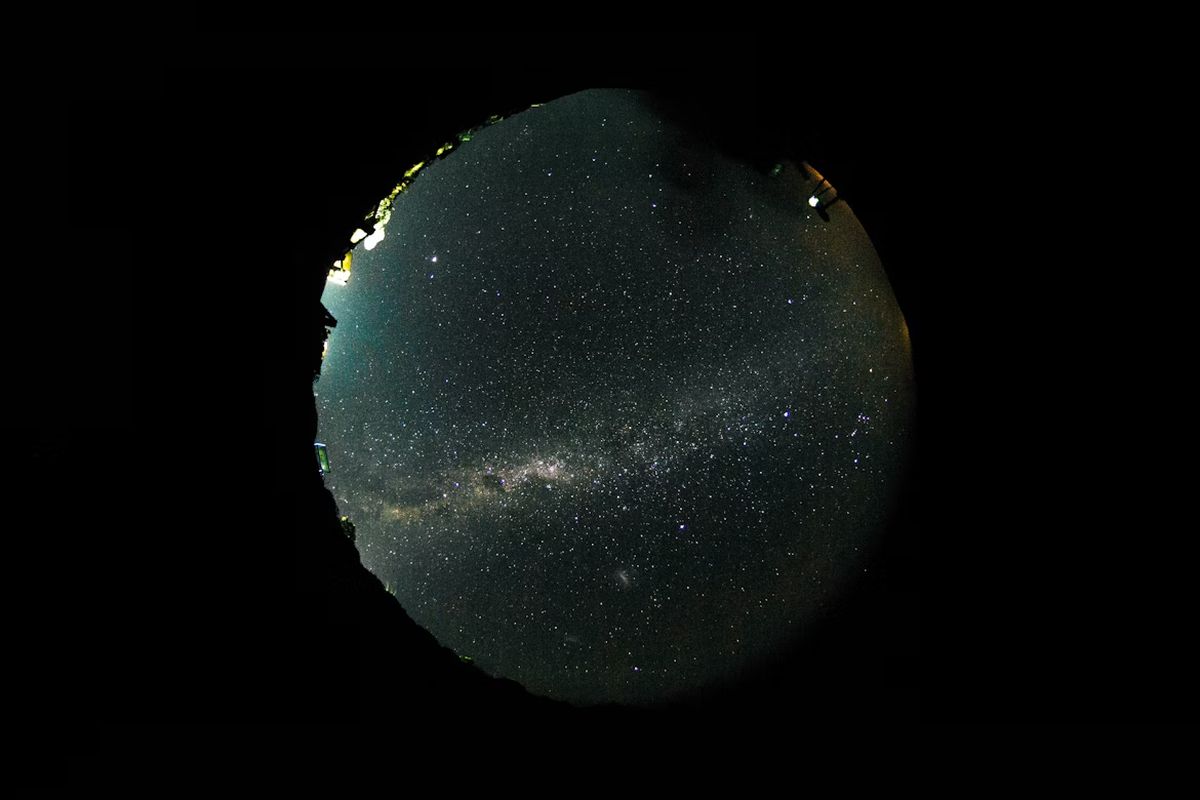Have astronomers finally found the universe’s first dark stars?

Within the first few hundred million years after the Big Bang, the universe’s first stars began to form from clouds of hydrogen and helium. However, observations from the James Webb Space Telescope (JWST) have revealed objects in the early universe that are puzzlingly bright, challenging conventional models of stellar evolution and black hole formation. A recent study led by researchers at Colgate University and The University of Texas at Austin reports the identification of four extremely distant objects whose properties are consistent with a theoretical new type of star. The research, published in the Proceedings of the National Academy of Sciences, suggests these may be the first observed “dark stars“—giant stellar objects powered not by nuclear fusion, but by the annihilation of dark matter.
A new theory of stellar evolutionThe theory of dark stars, originally developed by Katherine Freese and collaborators in a 2008 paper, provides a potential explanation for these unusual cosmic objects. According to the theory, dark stars are vast, “puffy” clouds composed primarily of hydrogen and helium. Unlike normal stars, which are supported against gravitational collapse by the outward pressure of nuclear fusion in their cores, dark stars are powered by a different mechanism. They are heated by the annihilation of dark matter particles within them.
It is widely believed that dark matter consists of a new type of particle, with Weakly Interacting Massive Particles (WIMPs) being a leading candidate. When these particles collide, they annihilate each other, depositing a minute but sufficient amount of heat into the collapsing gas cloud. This process prevents the cloud from becoming dense enough to initiate fusion, instead allowing it to grow into an extremely bright and supermassive object. The conditions for the formation of dark stars would have been ideal in the dense dark matter halos of the early universe.
Analyzing candidate objects from the James Webb Space TelescopeUsing data from JWST’s Advanced Deep Extragalactic Survey (JADES), the research team identified four candidate objects at extreme distances. The candidates are named JADES-GS-z14-0, JADES-GS-z14-1, JADES-GS-13-0, and JADES-GS-z11-0. The team analyzed both the morphology and the spectra of these objects using the telescope’s NIRCam and NIRSpec instruments. The analysis showed that each of the four objects is consistent with the supermassive dark star interpretation. Morphologically, JADES-GS-z14-1 is unresolved, meaning it appears as a point source, which is what would be expected of a single, very distant star. The other three objects are extremely compact.
The most compelling piece of evidence comes from the spectrum of JADES-GS-z14-0, which shows signs of a potential “smoking gun” signature for a dark star. Researchers found a dip in the spectrum consistent with a helium-ion absorption feature at 1640 Å. This specific feature is predicted to exist in the atmospheres of dark stars due to the large amounts of singly ionized helium. However, the researchers note that the signal-to-noise ratio of this feature is relatively low, at approximately S/N ~2, meaning the finding is still tentative.
Data from the Atacama Large Millimeter/submillimeter Array (ALMA) also revealed the presence of oxygen for the same object, which suggests it may not be an isolated primordial star but one embedded in a metal-rich environment, possibly as the result of a merger. The identification of supermassive dark stars could help solve two major puzzles in astronomy: why JWST is finding such bright galaxies in the early universe, and how the supermassive black holes seen powering distant quasars formed so quickly.
